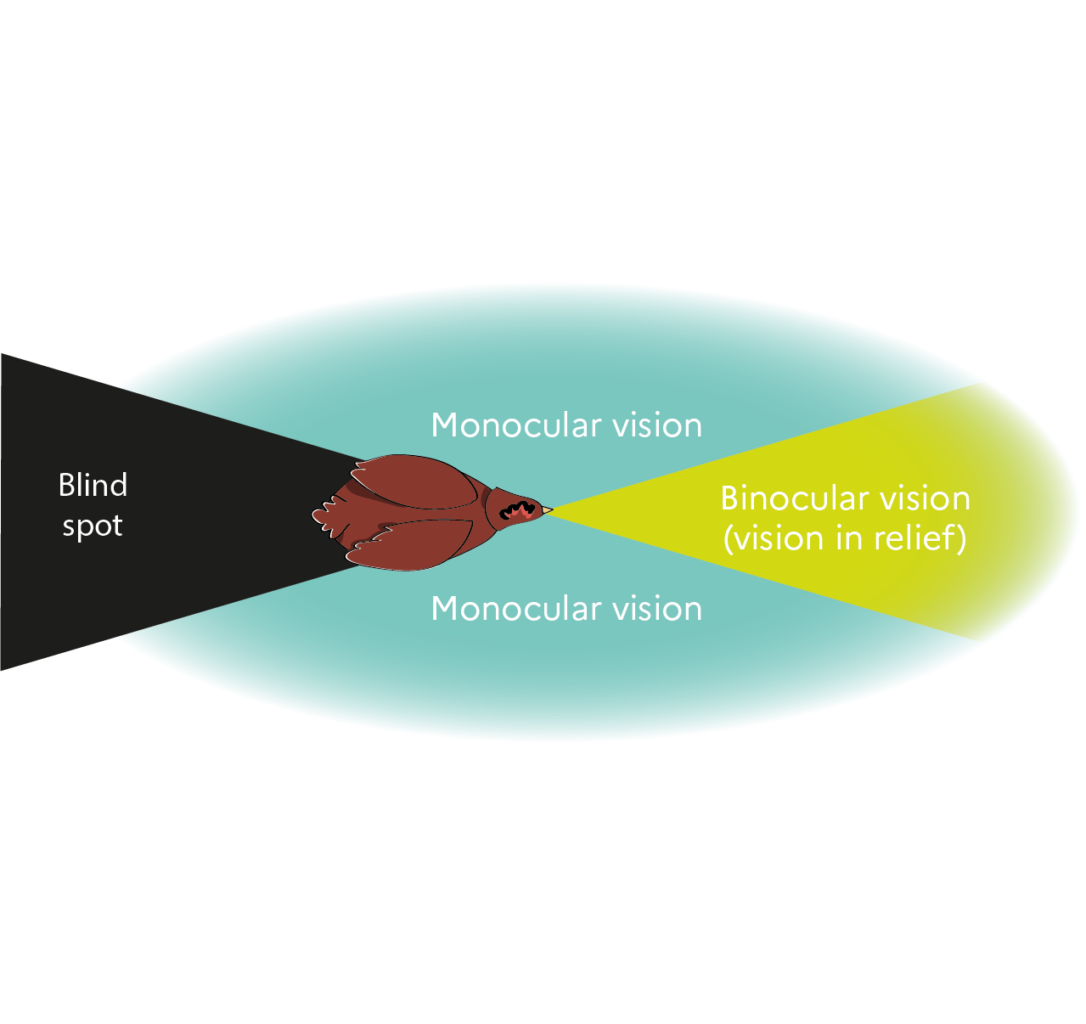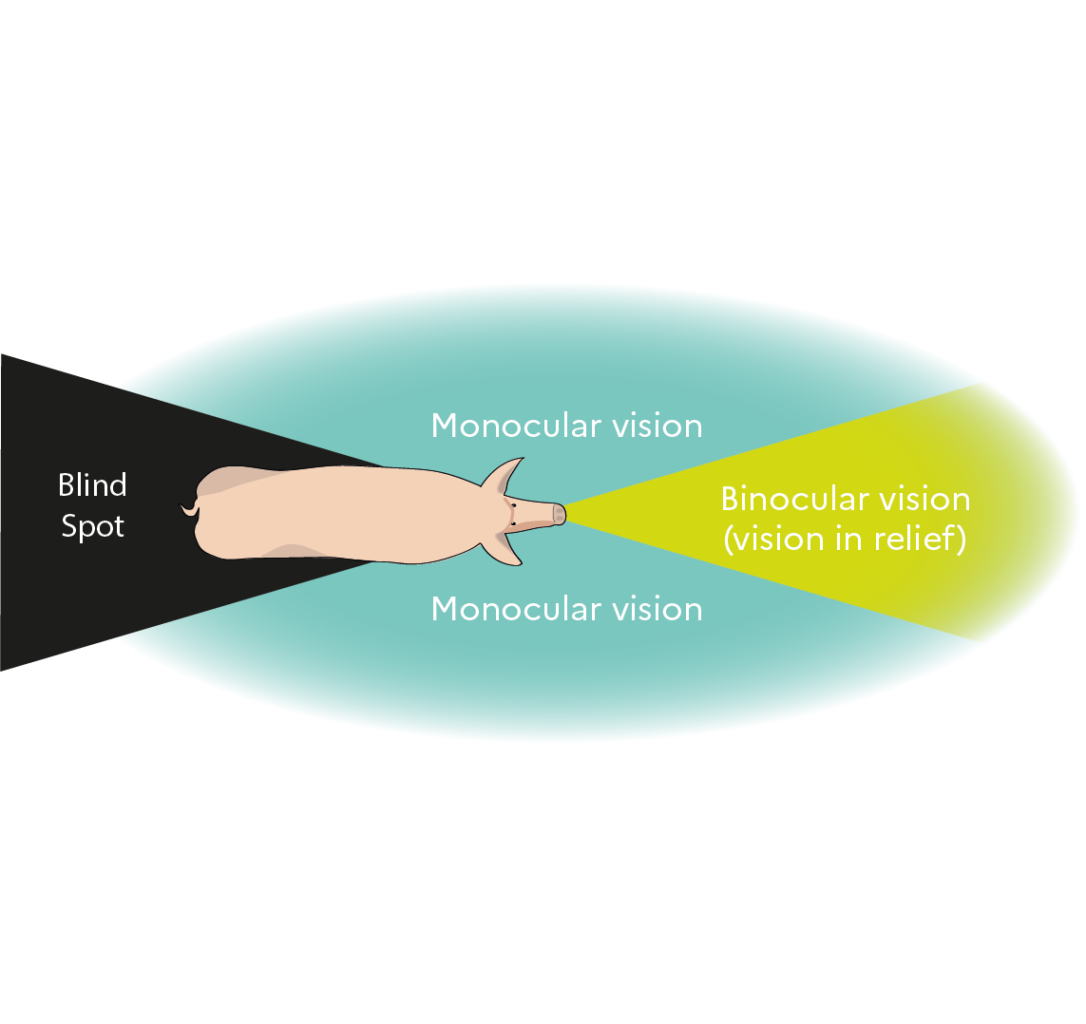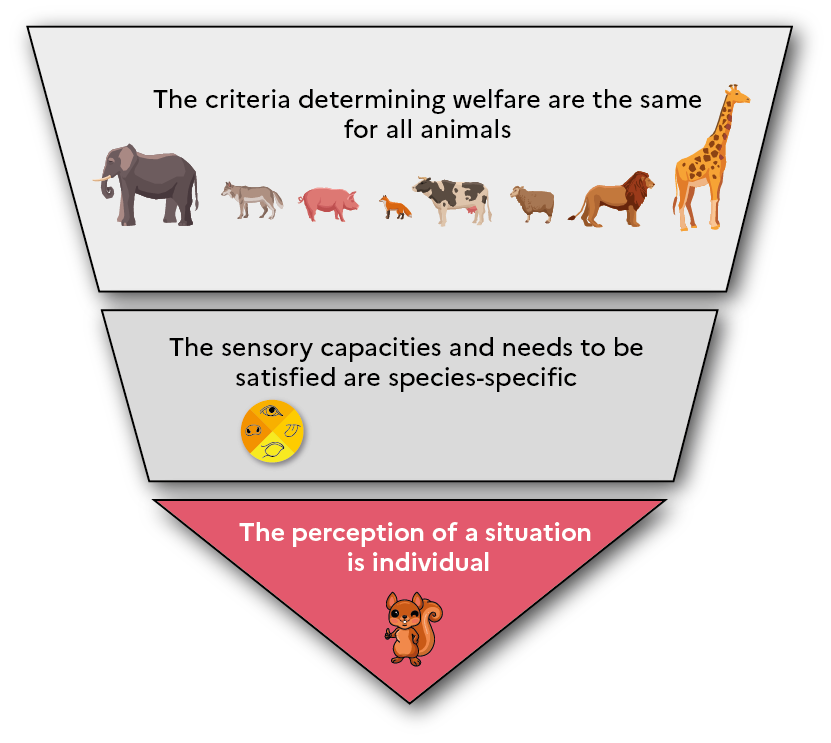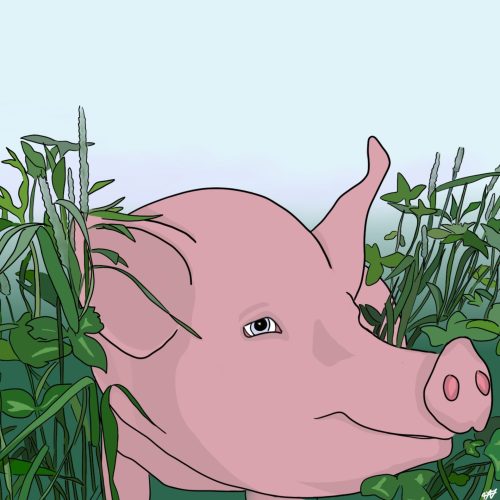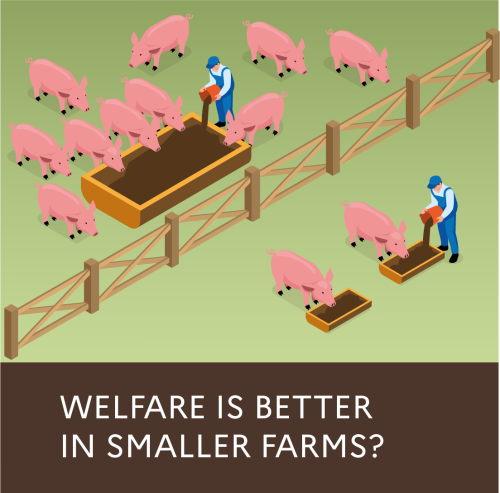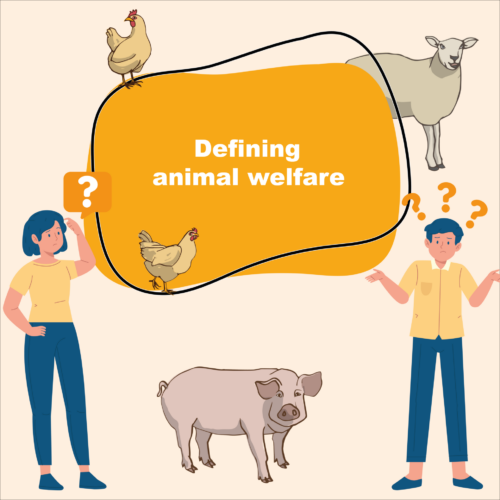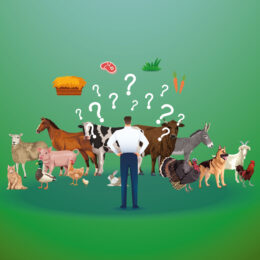

TRUE and FALSE...
Let us explain why!
keep in mind
- The general definition of animal welfare and the main principles of evaluation are the same for all animals
- Depending on the species, sensory capacities and physiological/behavioral needs are different
- The perception of the situation remains individual! Each animal has its own expectations and experiences
The definition of welfare and the principles for assessing it are the same for all species and/or animals

Animals capable of feeling emotions and having representational abilities can experience a state of welfare or unhappiness. The definition of welfare, as proposed by the Anses[3] can therefore be applied to all animals (vertebrates and fish), without distinction according to species.
The operational definitions used to evaluate it concretely in the field are therefore also the same. The 5 freedoms, or the Welfare Quality® principles, can be used for breeding pigs, sows, chickens … and even domestic carnivores. Thus, the absence of thirst or discomfort for example must be satisfied for cats at home as well as elephants in the savanna.
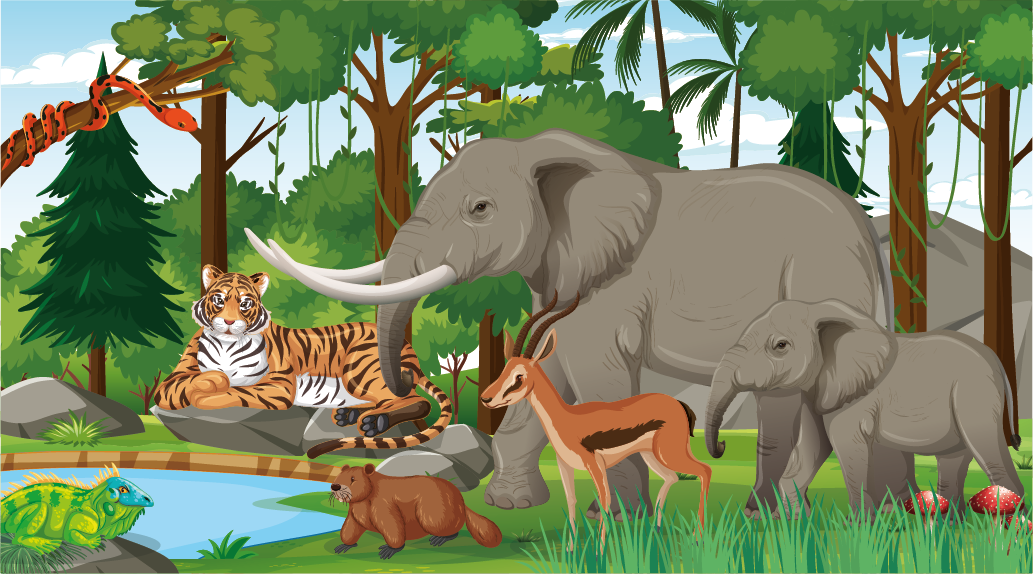
In checking if these principles are met, it is better to use animal-based indicators to assess animal welfare!!

In short!
The main principles of welfare are therefore the same for all animals. However, if we look a little more in detail, some aspects are specific to each species, or even to each animal.
The sensory capacities, physiological and behavioral needs as well as the indicators used are species-specific
The welfare of animals depends on their representation of the situation they are experiencing. This is true for all animals… This representation depends in part on their sensory capacities: which stimuli do they perceive and in what way? However, depending on the species, sensory capacities are different.
Thus, taking a well-known example, if we compare the sight of a pig to that of a hen, the pig has a blind zone of 30° behind and a 50° binocular zone where it can perceive reliefs well. For hens, the blind zone is 30° and the binocular zone is 30°. These two species do not perceive the world around them in the same way and their welfare will not be impacted in the same way depending on the stimuli.
Moreover, each species has specific physiological or behavioral needs. Thus, the thermal comfort of cattle or pigs or polar bears is not the same. A cow does not have the same need for perching as a chicken… and a Neapolitan Mastiff does not have the same food needs as a Persian cat. Welfare depends on the satisfaction of these needs, which is specific to each species.
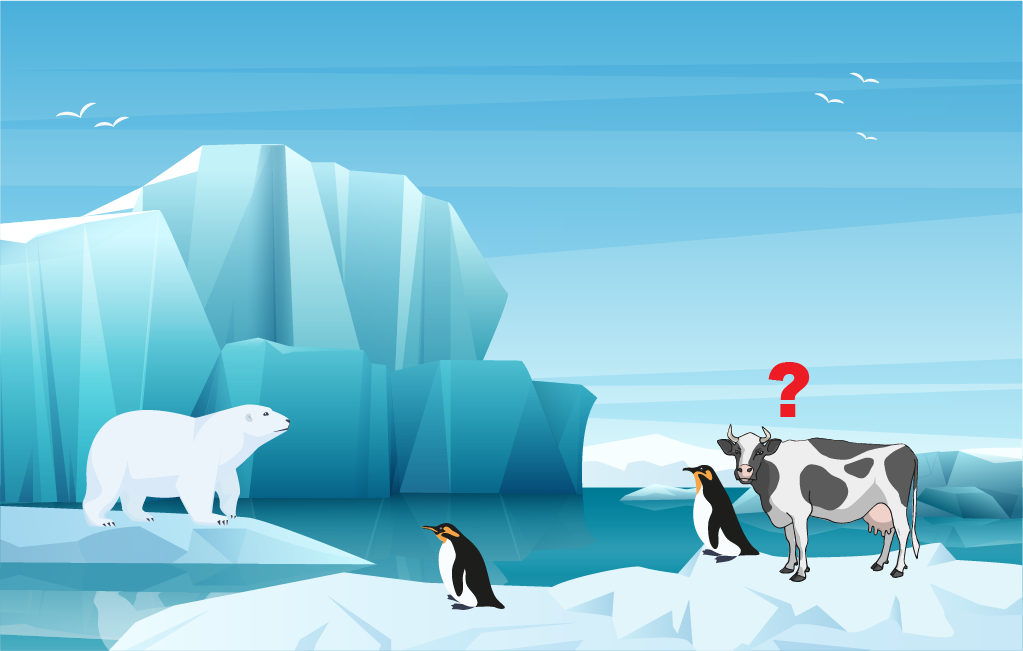
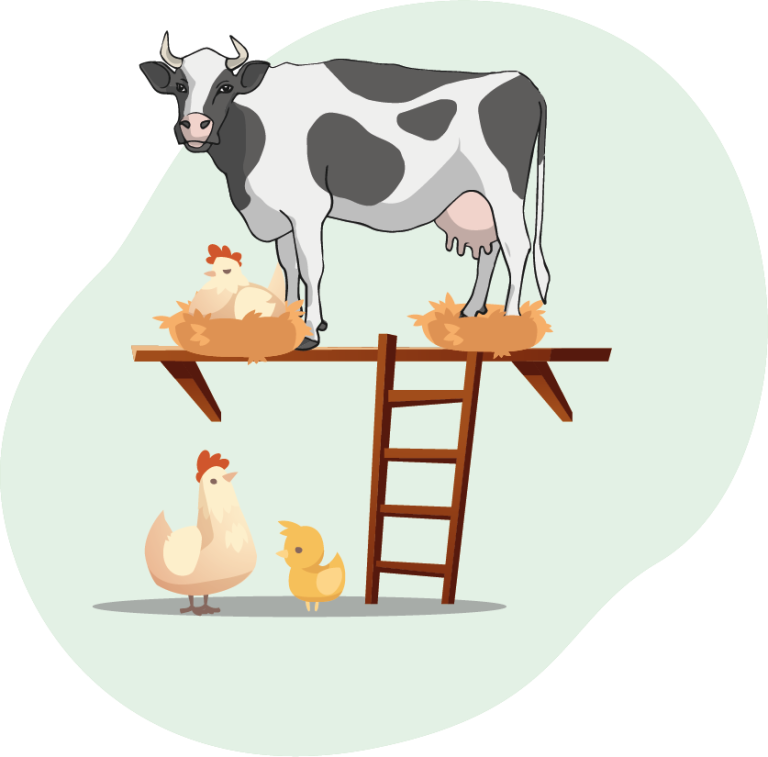
The risks which may cause a degradation of welfare will therefore also be species-specific. The risks of bedding discomfort for a horse will not be the same as for a duck, even if bedding comfort will be important for both.
Consequently, the indicators used to assess welfare are not the same for different species. For example, indicators for behavioral expression will differ between pigs (e.g., rooting behavior) and poultry (e.g., perching behavior). And while the same indicator may be used for different species, it will not be measured in the same way. For example, body condition scoring[4] may be used to assess feeding condition in cattle or pigs… but because of the morphological differences between the two species, it will not be measured using the same criteria.

In short!
The sensory capacities and the needs to be satisfied are species-specific, so are the risks that can lead to a degradation of welfare. This implies the use of species-specific indicators to assess the welfare of an animal.
Welfare is individual!
Sensory abilities have a common basis within the same animal species… but can still vary from one individual to another. For example, some individuals with better visual acuity will distinguish certain stimuli better, which may impact their welfare.
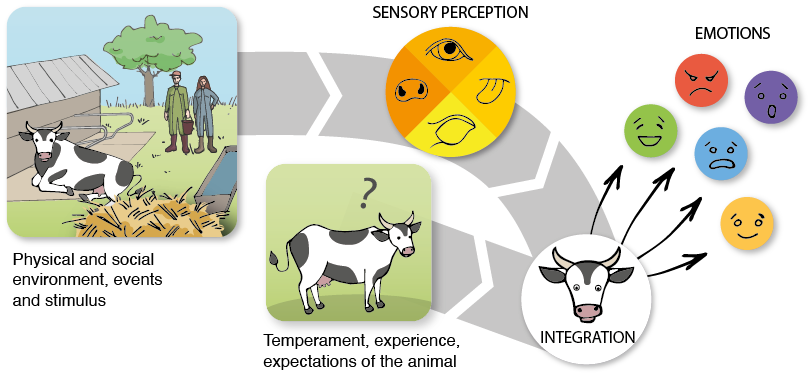
Once the stimulus is perceived by the animal, the representation it makes of it depends on many factors that are specific to it, such as its experience, its temperament… When approaching a human, two animals of the same species may have different representations: one may have a negative representation and behave shyly (having had former negative experiences with humans) while the other may have a positive representation, provided it had a positive previous experience.
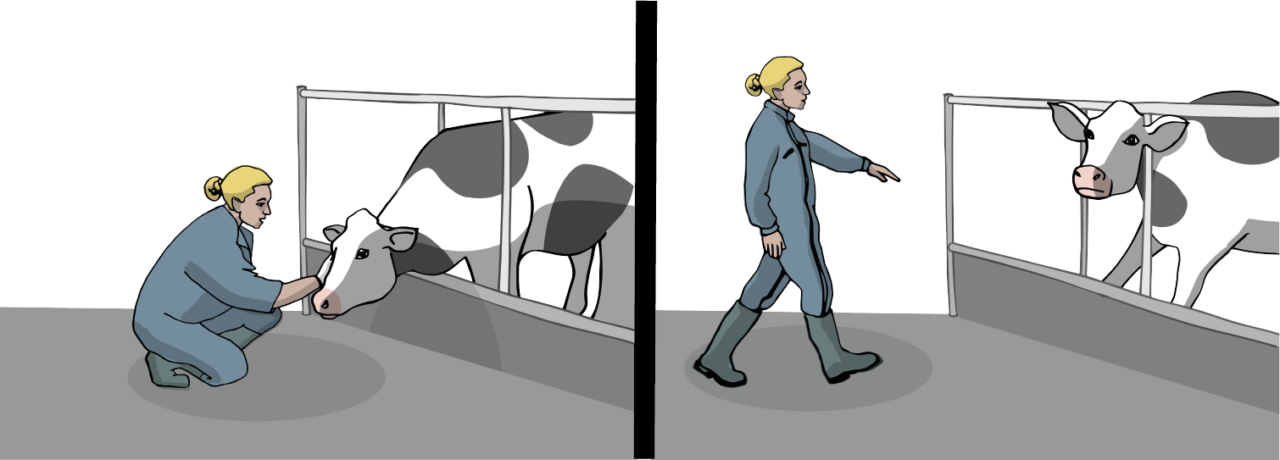
The representation of each situation is therefore specific to each individual… and welfare is individual! This is why it is preferable to speak of the “welfare of animals“ rather than “animal welfare” – which suggests that it is the same for all animals.

However, in the presence of many animals, as in breeding, the improvements must concern the greatest number and it is rare to be able to individualize welfare for each individual. For this reason, welfare must be assessed on a large number of individuals representing the diversity of the herd. Sampling is important to get a sense of a herd’s “average” welfare status.

In conclusion:
[1] Pierre Le Neindre, Emilie Bernard, Alain Boissy, Xavier Boivin, Ludovic Calandreau, et al. Animal consciousness. Summary of the collective scientific expertise. Summary. [Research report] INRA. 2017, 8 p. hal-01736383
[2] Generalization is impossible for invertebrates for lack of scientific data, even if was is shown that some of them (like the cuttlefish) feel emotions (https://anr.fr/Projet-ANR-18-CE02-0022).
[3] https://www.anses.fr/fr/content/l’anses-propose-une-définition-du-bien-être-animal-et-définit-le-socle-de-ses-travaux-de
[4] Which allows to evaluate the fattening state of an animal
keep in mind
- The general definition of animal welfare and the main principles of evaluation are the same for all animals
- Depending on the species, sensory capacities and physiological/behavioral needs are different
- The perception of the situation remains individual! Each animal has its own expectations and experiences

